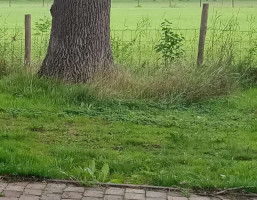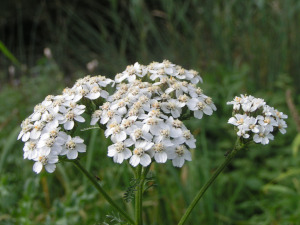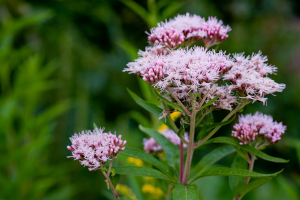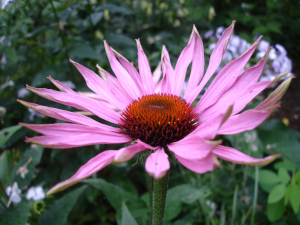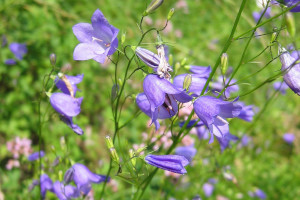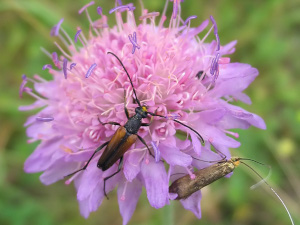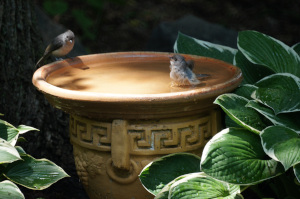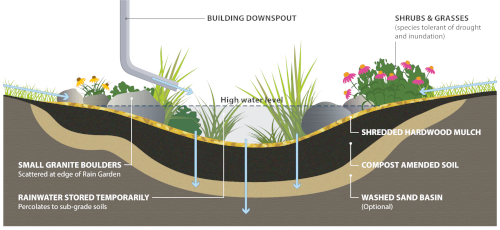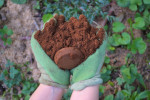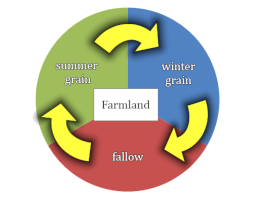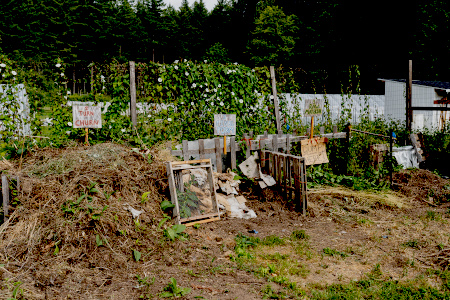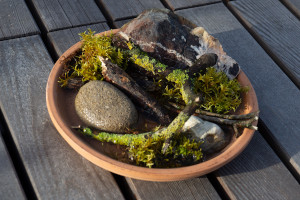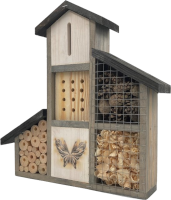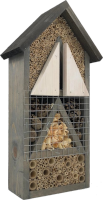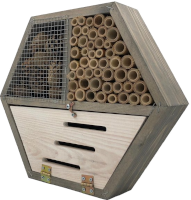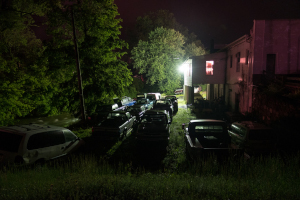Academic Studies
Alexandridis, Marion, Chaplin-Kramer, Dainese, Ekroos, et al. (2021). "Models of natural pest control: Towards predictions across agricultural landscapes". Biological Control 163. DOI
Arjumand, Amaninder, Kaisar, Sajad, Otto, et al. (2024). "Adapting to climate extremes: Implications for insect populations and sustainable solutions". Journal for Nature Conservation 79. DOI
Burszta-Adamiak, Biniak-Pieróg, Dąbek, & Sternik (2023). "Rain garden hydrological performance – Responses to real rainfall events". Science of The Total Environment 887. DOI
Chalkowski, Lepczyk, & Zohdy (2018). "Parasite Ecology of Invasive Species: Conceptual Framework and New Hypotheses". Trends in Parasitology 34(8): 655-663. DOI
Chowdhury, Jennions, Zalucki, Maron, Watson, & Fuller (2023). "Protected areas and the future of insect conservation". Trends in Ecology & Evolution 38(1): 85-95. DOI
Collins, Audusseau, Hassall, Keyghobadi, Sinu, & Saunders, (2024). "Insect ecology and conservation in urban areas: An overview of knowledge and needs". Insect Conservation and Diversity 17(2): 169–181. DOI
Dalton, Underwood, Inouye, Soulé, & Inouye (2023). "Long-Term Declines in Insect Abundance and Biomass in a Subalpine Habitat". Ecosphere 14(8): e4620. DOI
Deichmann, Ampudia Gatty, Andía Navarro, Alonso, Linares-Palomino, & Longcore, (2021). "Reducing the blue spectrum of artificial light at night minimises insect attraction in a tropical lowland forest". Insect Conserv Divers 14: 247-259. DOI
Duffus, Echeverri, Dempewolf, Noriega, Furumo, & Morimoto (2023). "The Present and Future of Insect Biodiversity Conservation in the Neotropics: Policy Gaps and Recommendations". Neotrop Entomol 52(3): 407-421. DOI
Hallmann, Sorg, Jongejans, Siepl, Hofland, et al. (2017). "More than 75 percent decline over 27 years in total flying insect biomass in protected areas". PLOS ONE 12(10):e0185809. DOI
Halloran, Muenke, Vantomme, & van Huis (2014). "Insects in the human food chain: global status and opportunities". Food Chain 4(2): 103-118. DOI
Harvey, Tougeron, Gols, Heinen, Abarca, et al. (2023). Scientists' warning on climate change and insects. Ecological Monographs 93(1). DOI
Janzen, & Hallwachs (2021). "To us insectometers, it is clear that insect decline in our Costa Rican tropics is real, so let’s be kind to the survivors". Proc. Natl. Acad. Sci. U.S.A. 118(2): e2002546117. DOI
Kasprzyk, Szpakowski, Poznańska, Boogaard, Bobkowska, & Gajewska (2022). "Technical solutions and benefits of introducing rain gardens – Gdańsk case study". Science of The Total Environment 835. DOI
Knop, Zoller, Ryser, Gerpe, Hörler, & Fontaine (2017). "Artificial light at night as a new threat to pollination". Nature 548: 206–209. DOI
Owens, Cochard, Durrant, Farnworth, Perkin, & Seymoure (2020) "Light pollution is a driver of insect declines". Biological Conservation 241. DOI
Pan, Marshall, de Snoo, & Biesmeijer (2024). "Dutch landscapes have lost insect-pollinated plants over the past 87 years". Journal of Applied Ecology 61: 1323-1333 DOI
Rupali, Basavaraj, Vidya, Bharath, Karthick, & Sudhanshu (2024). "A study to access the significant role of insects in decomposition and nutrient recycling". Int. J. Adv. Biochem. Res. 8(9S): 110-114. DOI
Sánchez-Bayo, & Wyckhuys (2019). "Worldwide decline of the entomofauna: A review of its drivers". Biological Conservation 232: 8-27. DOI
Schirmel, Bundschuh, Entling, Kowarik, & Buchholz (2016) "Impacts of invasive plants on resident animals across ecosystems, taxa, and feeding types: a global assessment". Glob Change Biol 22: 594-603. DOI
Schneider, Rebetez, & Rasmann (2022). "The effect of climate change on invasive crop pests across biomes". Current Opinion in Insect Science 50. DOI
Souther, Sandor, Sample, Gabrielson, & Aslan (2024). "Bee and butterfly records indicate diversity losses in western and southern North America, but extensive knowledge gaps remain". PLOS ONE 19(5): e0289742. DOI
Subedi, Poudel, & Aryal (2023). "The impact of climate change on insect pest biology and ecology: Implications for pest management strategies, crop production, and food security". Journal of Agriculture and Food Research 14. DOI
UNEP - Science Division (2019). "We are Losing the 'Little Things that Run the World'". Foresight Brief 11. Link
Veldkamp, Meijer, Alleweldt, Deruytter, Van Der Borght, et al. (2024). "Sustainable integration of insects into European food chains". Journal of Insects as Food and Feed 11(17): 229-237. DOI
Yang, & Gratton (2014) "Insects as drivers of ecosystem processes". Current Opinion in Insect Science 2: 26-32. DOI
